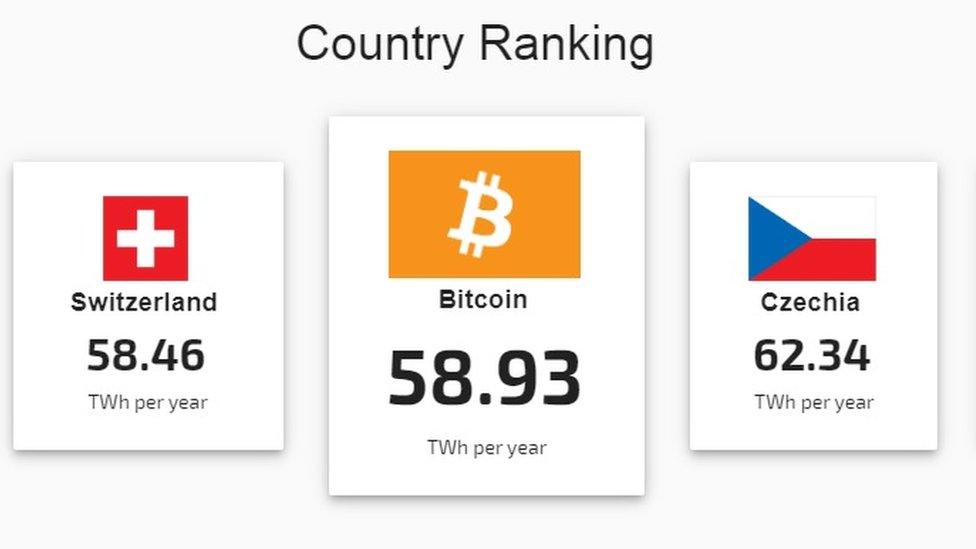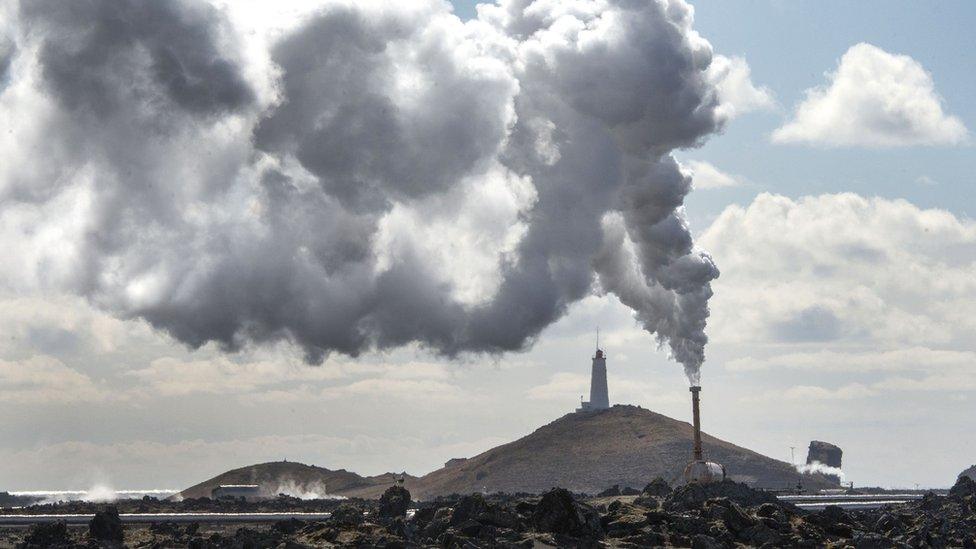Bitcoin's energy consumption 'equals that of Switzerland'
- Published

Bitcoin uses about as much energy as Switzerland
Bitcoin uses as much energy as the whole of Switzerland, a new online tool from the University of Cambridge shows., external
The tool makes it easier to see how the crypto-currency network's energy usage compares with other entities.
However, one expert argued that it was the crypto-currency's carbon footprint that really mattered.
Currently, the tool estimates that Bitcoin is using around seven gigawatts of electricity, equal to 0.21% of the world's supply.
That is as much power as would be generated by seven Dungeness nuclear power plants at once.
Over the course of a year, this equates to roughly the same power consumption as Switzerland.
"We want to use comparisons that set the narrative," said the tool's co-creator Michel Rauchs, from the university.
"Visitors to the website can make up their own mind as to whether it seems large or small."

Bitcoin explained: How do cryptocurrencies work?
How does it work?
In order to "mine" Bitcoin, computers known as mining machines are connected to the crypto-currency network.
They are tasked with verifying transactions made by people who send or receive Bitcoin. This process involves solving puzzles.
The puzzles aren't integral to verifying movements of Bitcoin, they simply provide a hurdle to ensure no-one fraudulently edits the global record of all transactions. As a reward for pitching in to this system, miners occasionally receive small amounts of Bitcoin.
To make as much money from this process as possible, people often connect large numbers of miners to the network - even entire warehouses full of them.
That uses lots of electricity because the miners are more or less constantly working.
The University of Cambridge tool models the economic lifetime of the world's Bitcoin miners. It uses an average electricity price per kilowatt hour ($0.05, £0.04) and the energy demands of the Bitcoin network. Finally, the model assumes that all the Bitcoin mining machines worldwide are working with various efficiencies.
It is then possible to estimate how much electricity is being consumed at any one time.


Enough to power one of the world's oldest universities for a few more centuries
Bitcoin energy expert Alex de Vries, from accountants PwC, built a similar tool to estimate Bitcoin's energy use last year., external
He told BBC News that the most important thing was the carbon footprint of Bitcoin's energy consumption.
That is, the emissions associated with the electricity resources used to power the crypto-currency. This varies from place to place, depending on energy supplies.
Mr de Vries said that, despite its many proponents, the Bitcoin network has an energy consumption problem. It uses lots of energy despite processing fewer than 100 million financial transactions per year.
He added that the number was "completely insignificant" in global terms. The traditional financial industry processes 500 billion transactions per year, he added.
Mr de Vries said that Bitcoin still appears to use far more energy per transaction than all the world's banks put together, when considering the amount of energy used by data centres.
The electricity used for Bitcoin produces about 22 megatons of CO2 annually, a study in the scientific journal Joule estimated., external That is as much as Kansas City in the US.
- Published28 June 2019

- Published12 February 2018

- Published12 December 2017
